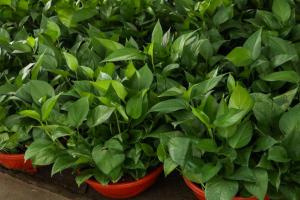Introduction
The forestry industry is an essential sector of the global economy that involves the management, cultivation and harvesting of trees for commercial use. Trees are vital resources that provide a range of products, including paper, lumber, energy, and food, among others. Therefore, forest management is critical to ensure that these resources are available for future generations. This article discusses how the forestry industry plants, grows, and harvests trees.
The Planting Process
The planting process of trees in the forestry industry is a meticulous process that involves selecting the right species, identifying the appropriate site, and preparing the land. In most cases, the industry utilizes seedlings, which are young trees that have been grown in a nursery before being transplanted. The planting technique is crucial as it determines the trees' health and survival, which can take years to reach maturity. In most cases, tree planting takes place during the spring season when the ground is moist and temperatures are mild.
The Growing Process
The growing process of trees in the forestry industry involves various factors that contribute to the trees' health and quality. Some of these factors include soil fertility, water availability, pest and disease management, and climatic conditions. The industry regularly monitors the trees to ensure that they are healthy and free from pests and diseases. Additionally, farmers may apply fertilizers and other growth enhancers to improve the trees' vigor and productivity. It is worth noting that tree growth varies depending on the species, the climate, and the intended use of the trees.
The Harvesting Process
The harvesting process in the forestry industry involves the felling and removal of mature trees from the forest. The process is typically done with specialized machinery, including chainsaws, harvesters, and skidders. Once the trees are cut down, they undergo processing, which involves debarking, delimbing, and bucking into sections. The logs are then transported out of the forests to mills or pulp manufacturers, where they are processed into finished products such as paper, lumber, or bioenergy. Additionally, some trees may be harvested for food and therapeutic purposes, depending on the species and the market demand.
Conclusion
The forestry industry is an important sector that plays a significant role in the global economy. The planting, growing, and harvesting processes of trees are critical components of the industry, which ensure the availability of its resources. Therefore, it is essential to sustainably manage forests to ensure that they are productive, healthy, and continue providing essential services such as carbon sequestration, water regulation, biodiversity conservation, and climate change adaptation.

 how many times do yo...
how many times do yo... how many planted tre...
how many planted tre... how many pine trees ...
how many pine trees ... how many pecan trees...
how many pecan trees... how many plants comp...
how many plants comp... how many plants can ...
how many plants can ... how many plants and ...
how many plants and ... how many pepper plan...
how many pepper plan...





























